AI-Powered Business Intelligence: The Complete Guide to GenBI
Discover how Generative Business Intelligence (GenBI) powered by Wren AI is transforming data access with conversational AI, real-time insights, and intuitive decision-making tools for modern enterprises

Howard Chi
Updated: Dec 18, 2025
Published: Feb 07, 2025
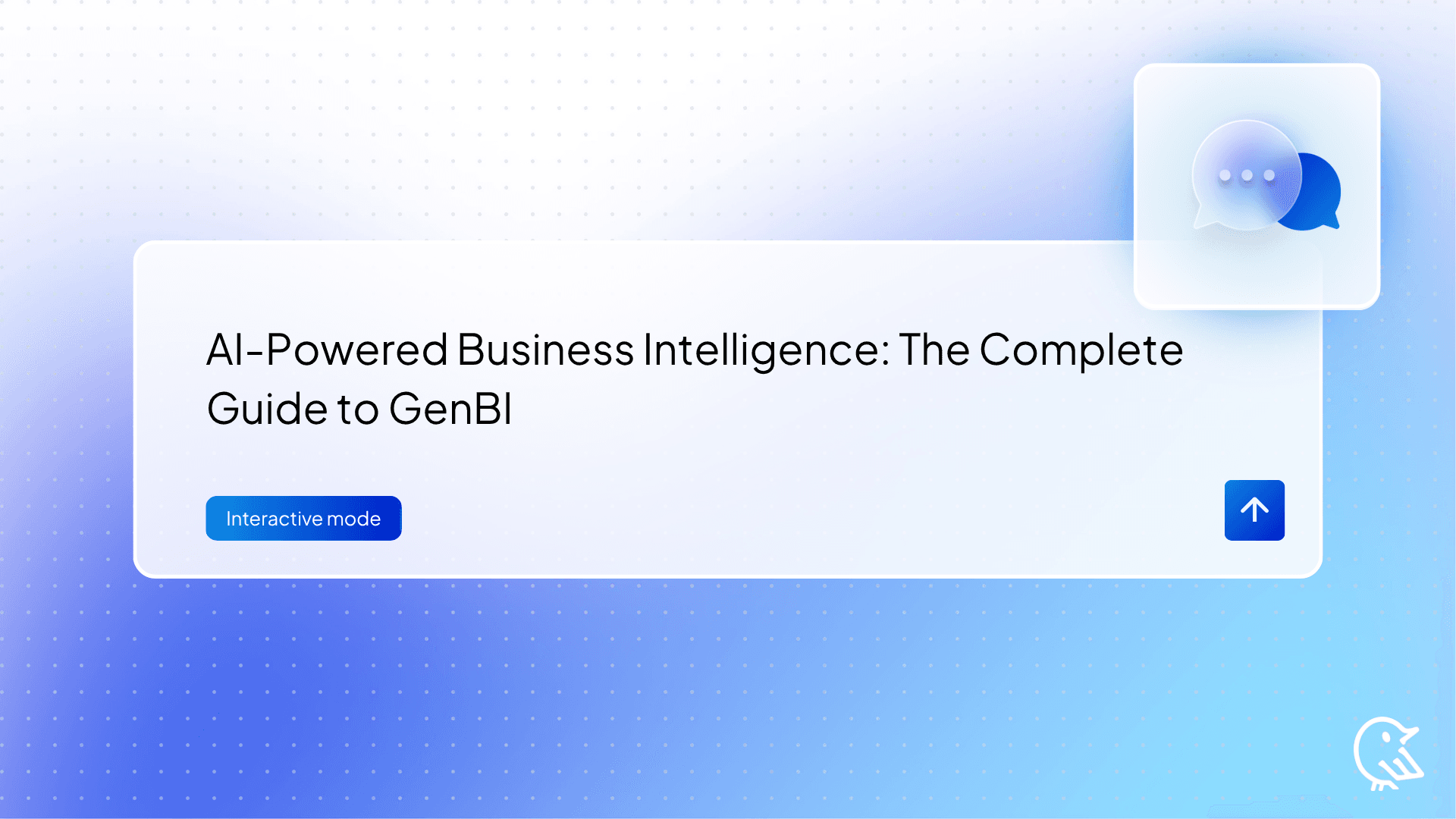
As we delve deeper into the vision and design of Wren AI, we find ourselves on the brink of defining what we believe is the next frontier in Business Intelligence, a term we refer to as “Generative BI” or “GenBI.” GenBI signifies a paradigm shift that reimagines not only how we interact with BI tools but also how these systems are fundamentally structured. It transcends the mere evolution of interfaces; it is a complete reinvention of the core of BI architecture. At the heart of this transformation are four foundational layers that empower GenBI to redefine the future of data-driven decision-making. This is where the future of BI begins, and we’re excited to lead the charge.
Business intelligence (BI) has long been a cornerstone of data-driven decision-making, empowering organizations to leverage data for strategic insights. However, traditional BI systems have struggled to keep pace with the needs of modern enterprises. Complex interfaces, steep learning curves, and reliance on technical expertise often limit accessibility and adoption.
Enter Generative Business Intelligence (GenBI) — a revolutionary approach that redefines how businesses interact with data. Powered by innovations like Wren AI, GenBI is transforming BI from a technical challenge into an intuitive, conversational experience.
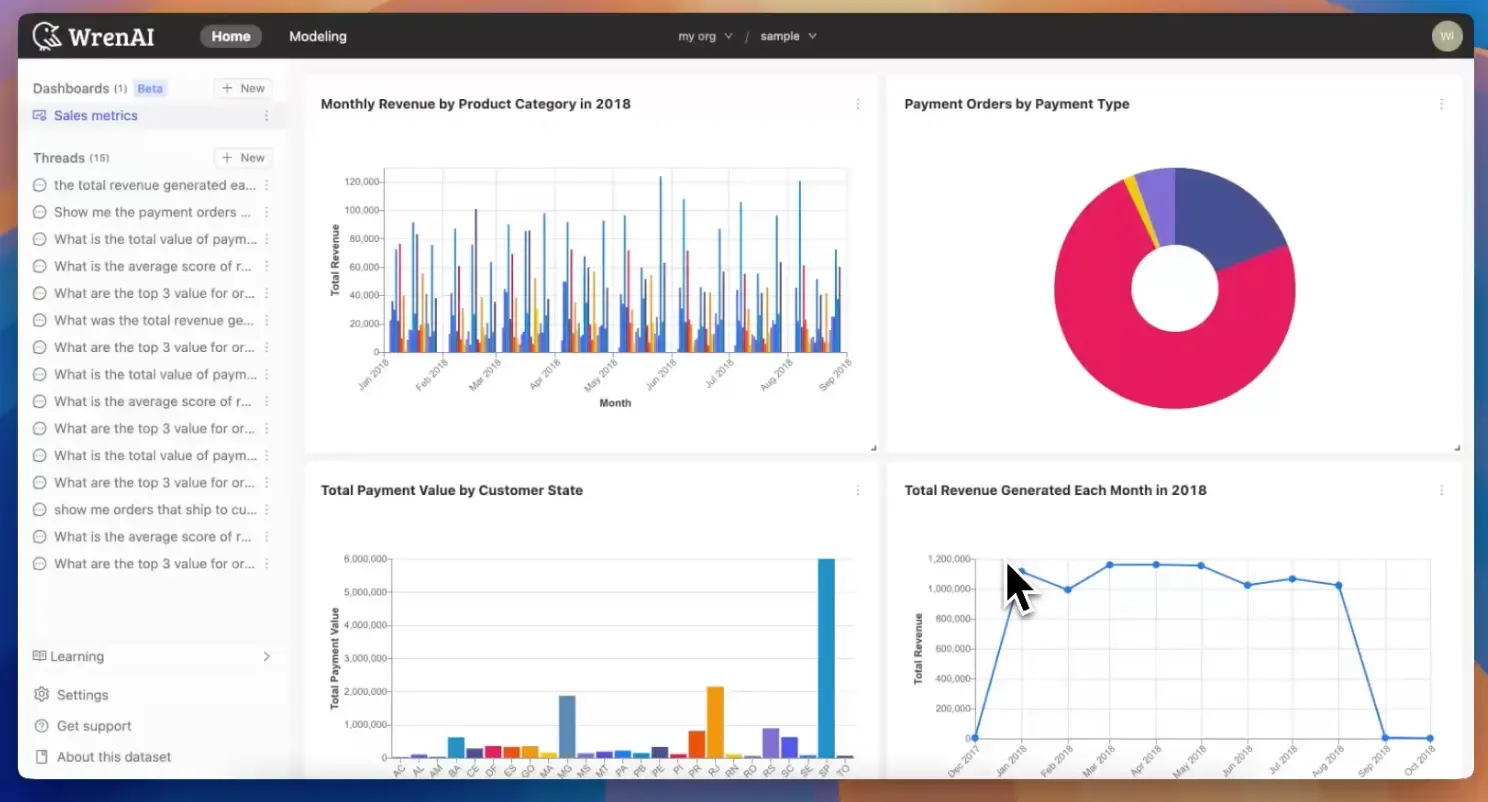
The Challenges of Traditional BI
While traditional BI tools have enabled organizations to harness data, they come with significant limitations that hinder their full potential:
1. Steep Learning Curve for Non-Technical Users
BI platforms often require technical skills to navigate complex dashboards or write SQL queries. For non-technical users, this creates a dependency on IT teams or analysts, delaying access to insights and increasing frustration.
2. Centralized Data Access
The reliance on technical expertise means data access is often bottlenecked. Business teams must submit requests for specific queries, slowing decision-making and reducing agility.
3. Static Insights
Traditional BI systems are designed around static dashboards and pre-configured reports. They fail to offer the dynamic, on-the-fly insights needed to respond to real-time business challenges.
4. Siloed and Fragmented Data
Integrating data from multiple systems remains a persistent challenge. Many BI tools struggle to provide a unified view, forcing businesses to operate with incomplete or disjointed data.
5. Delayed Decision-Making
Without real-time insights, traditional BI systems often present outdated information, leading to missed opportunities and slower responses to emerging trends.
6. High Cost of Ownership
The combination of training, maintenance, and IT involvement significantly increases the total cost of ownership for traditional BI tools, making them less scalable for organizations.
Introducing Generative BI (GenBI): The Future of BI
Generative Business Intelligence (GenBI) represents a paradigm shift in how organizations interact with their data. Unlike traditional BI, which relies heavily on predefined dashboards, complex interfaces, and technical expertise, GenBI uses AI and LLMs to deliver a fundamentally different experience.
By enabling users to ask questions in plain language and receive instant, context-aware answers, GenBI democratizes data access and redefines how insights are derived. It transforms BI into a dynamic, proactive system that adapts to user needs, integrating real-time data and predictive analytics to deliver insights tailored to business demands. GenBI’s ability to bridge fragmented data silos and offer unified, intuitive interactions makes it a game-changer for enterprises looking to stay competitive in an increasingly data-driven world.
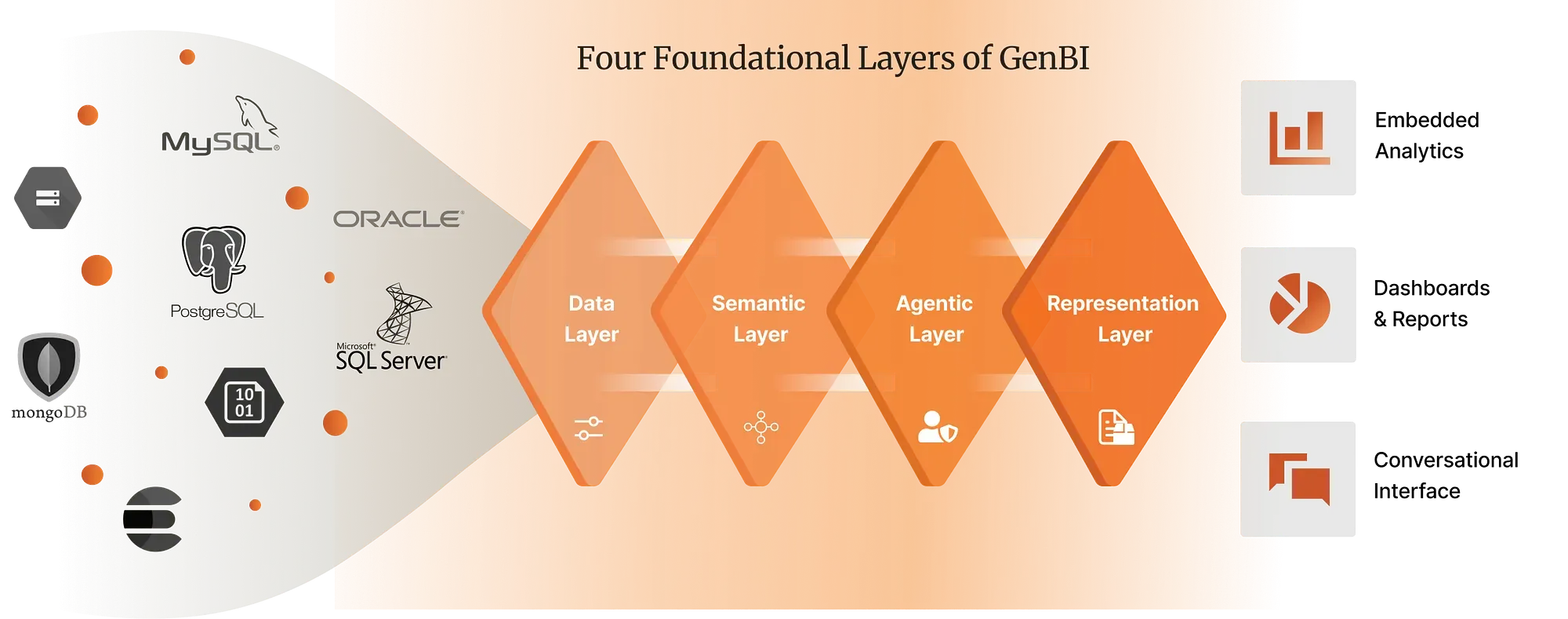 Four Foundational Layers of GenBI
Four Foundational Layers of GenBI
At its core, GenBI is built on four foundational layers that enable its transformative capabilities:
1. Representation Layer
This is the user-facing interface where insights are delivered in an easily digestible format. Whether through natural language responses, dynamic visualizations, or real-time dashboards, the representation layer ensures that insights are accessible and actionable for all users, regardless of their technical expertise.
2. Agentic Layer
The agentic layer powers the conversational capabilities of GenBI. It leverages AI agents that can understand user queries, interpret intent, and provide contextually relevant responses. This layer enables interactive, human-like conversations with data, allowing users to ask follow-up questions and refine insights without needing to reframe their queries.
3. Semantic Layer
The semantic layer acts as the intelligence behind the scenes, mapping the relationships between data points. It provides a unified framework that understands the meaning and context of data across different sources. This layer ensures that users get accurate, context-aware insights without needing to navigate the complexities of raw data structures.
4. Data Layer
The data layer integrates and unifies information from various sources, such as SaaS tools, databases, and cloud storage. It ensures that data is clean, accessible, and ready for analysis. By breaking down silos and creating a single source of truth, the data layer lays the foundation for reliable and comprehensive insights.
At the forefront of the GenBI revolution is Wren AI, a platform designed to eliminate the barriers of traditional BI. Wren AI’s mission is to unify enterprise data and deliver insights through intuitive, conversational interfaces. Here’s how Wren AI is redefining BI:
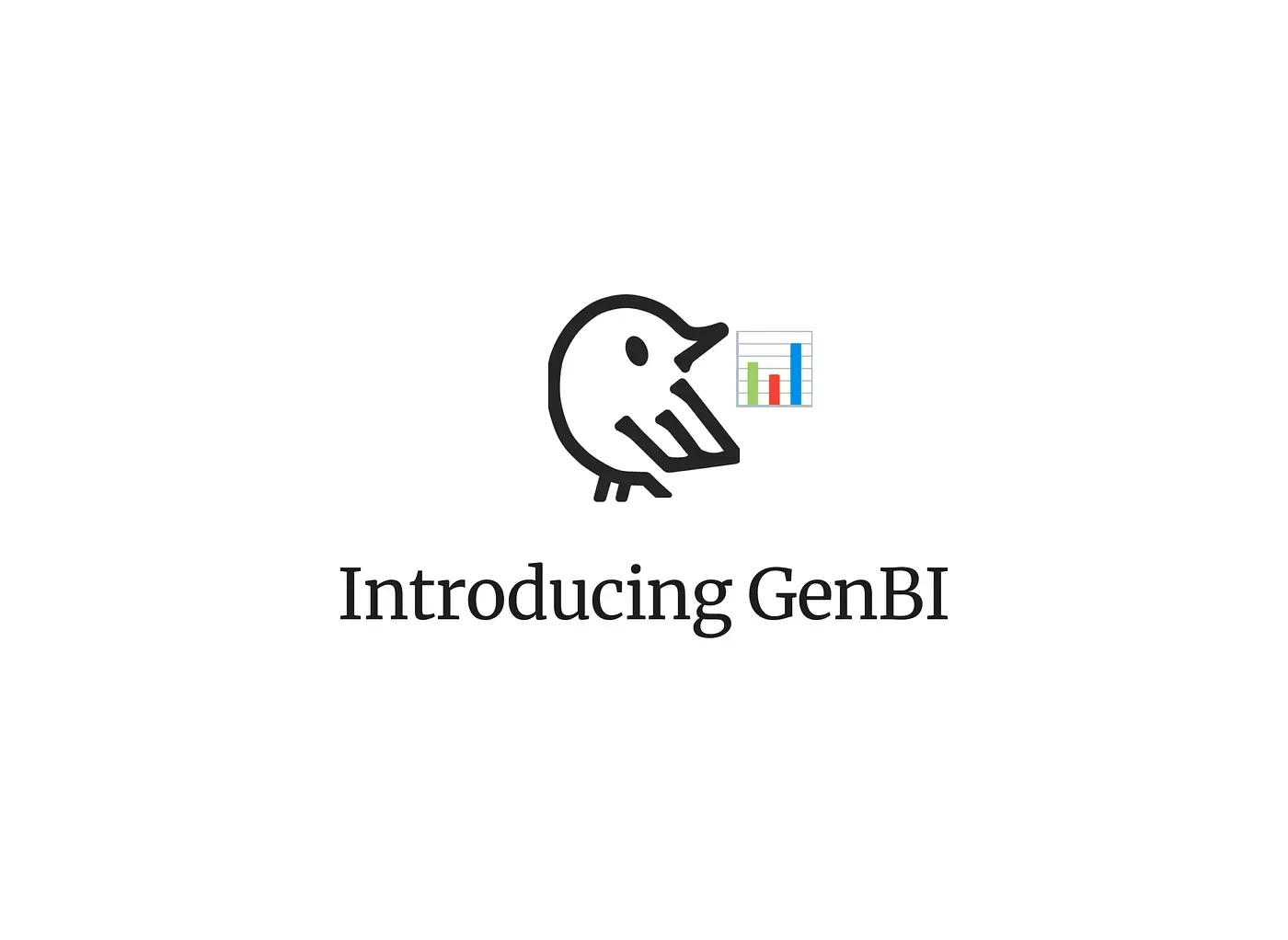
1. Text-to-SQL Self-Service Analytics
With Wren AI, users can ask questions in natural language, and the system automatically translates these queries into SQL. This enables business users to extract insights without writing a single line of code.

2. Composable Data Framework with Semantic Engine
At the core of Wren AI lies a powerful semantic engine known as the Wren Engine. This engine is designed to organize and interpret data from multiple sources — like HubSpot, Stripe, and Google Ads — using a composable data framework. Wren AI also leverages a Modeling Definition Language (MDL) to define and maintain semantics across all integrated systems. This ensures a unified and holistic view of enterprise operations, allowing all teams to operate with context-rich insights.
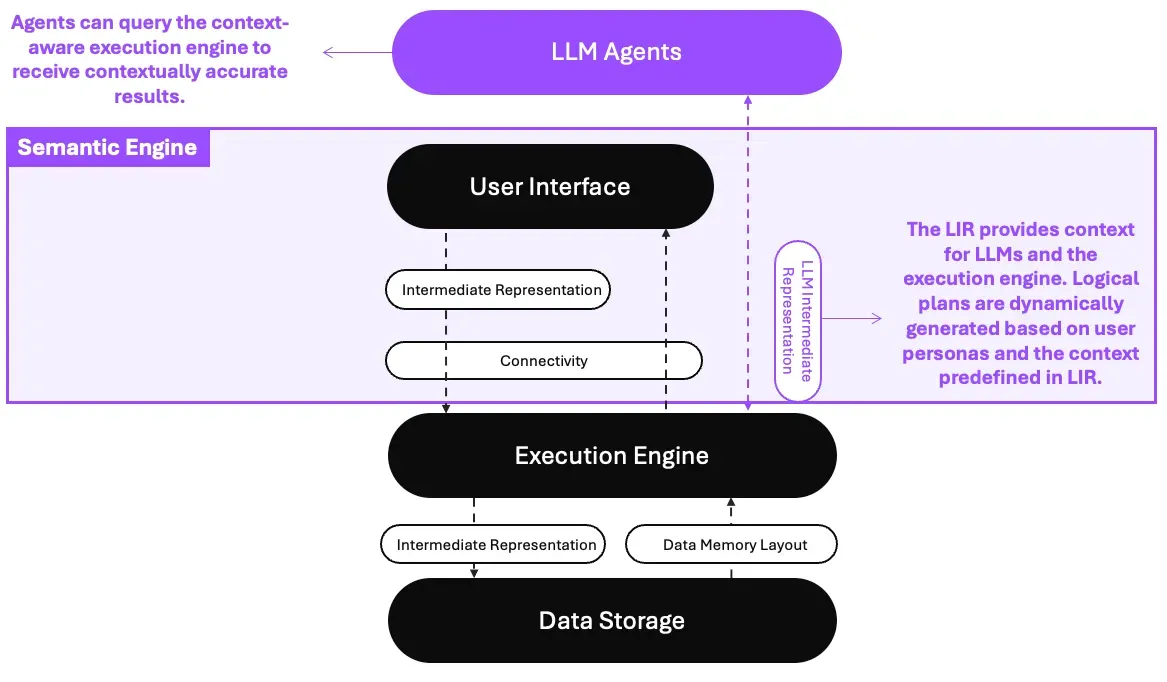
3. AI-Driven Decision-Making
By combining generative AI with the Wren Engine’s contextual understanding and real-time data processing, Wren AI delivers actionable insights faster. The Agentic Layer of Wren AI employs advanced techniques such as Chain of Thought (CoT) reasoning and ReAct (Reasoning and Acting) prompting, which allow for step-by-step, context-aware workflows. These techniques enable Wren AI to intelligently analyze complex queries, break them into manageable steps, and interact with the data dynamically. When paired with the semantic enhancements from our Modeling Definition Language (MDL), Wren AI generates highly precise SQL queries tailored to the user’s intent. This approach not only simplifies data interactions but also ensures deep, actionable insights for even the most complex business questions
Using Wren AI to Unlock GenBI
Wren AI simplifies the transition to Generative Business Intelligence with an intuitive process that transforms how businesses interact with data:
1. Connect to Your Data Sources or SaaS Tools
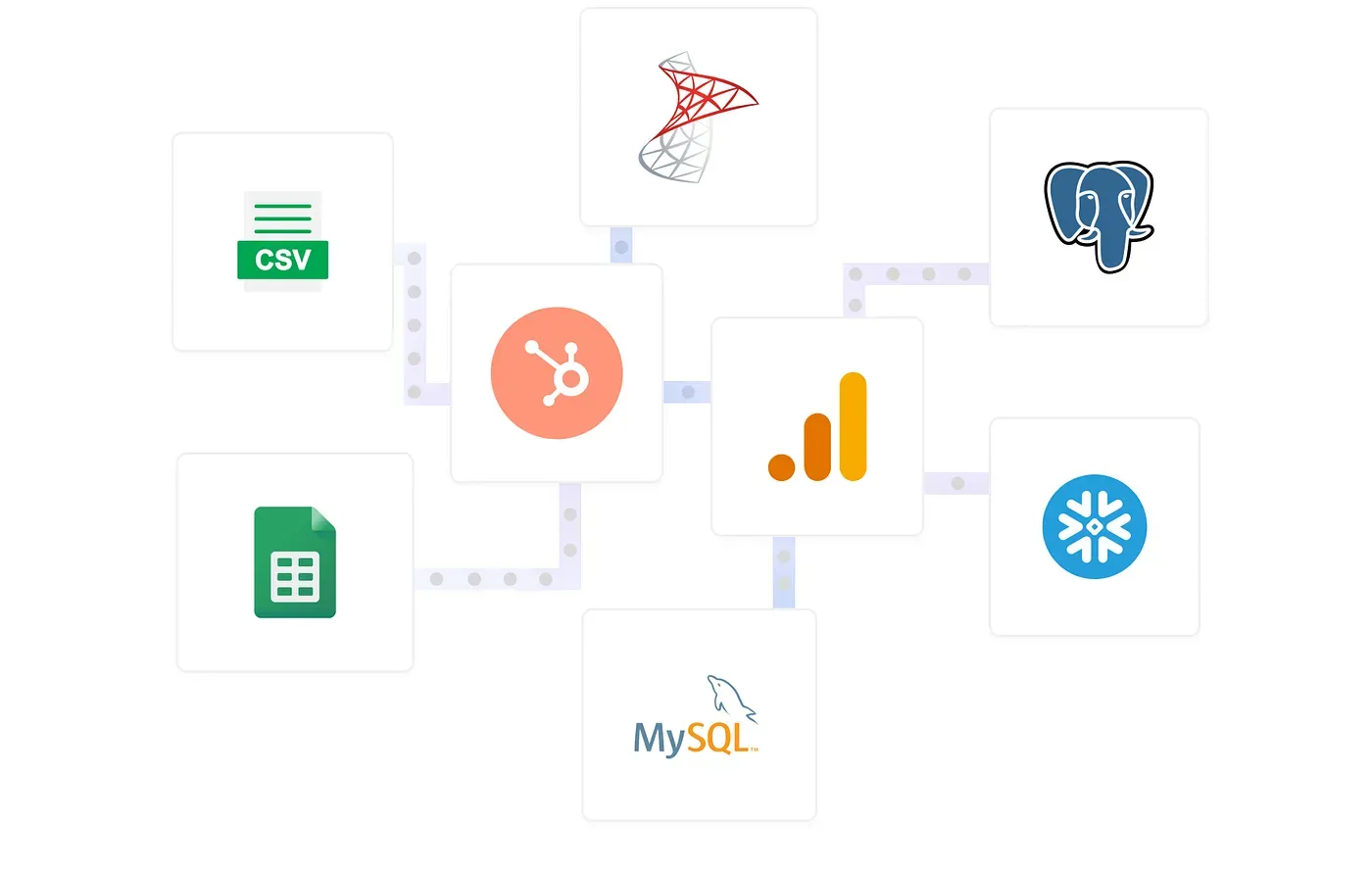 Easily integrate Wren AI with your existing data sources or SaaS tools like HubSpot, Stripe, and Google Ads. In just a few steps, Wren AI provides access to a unified view of your enterprise data.
Easily integrate Wren AI with your existing data sources or SaaS tools like HubSpot, Stripe, and Google Ads. In just a few steps, Wren AI provides access to a unified view of your enterprise data.
2. Add Semantics on Top of Your Data Sources
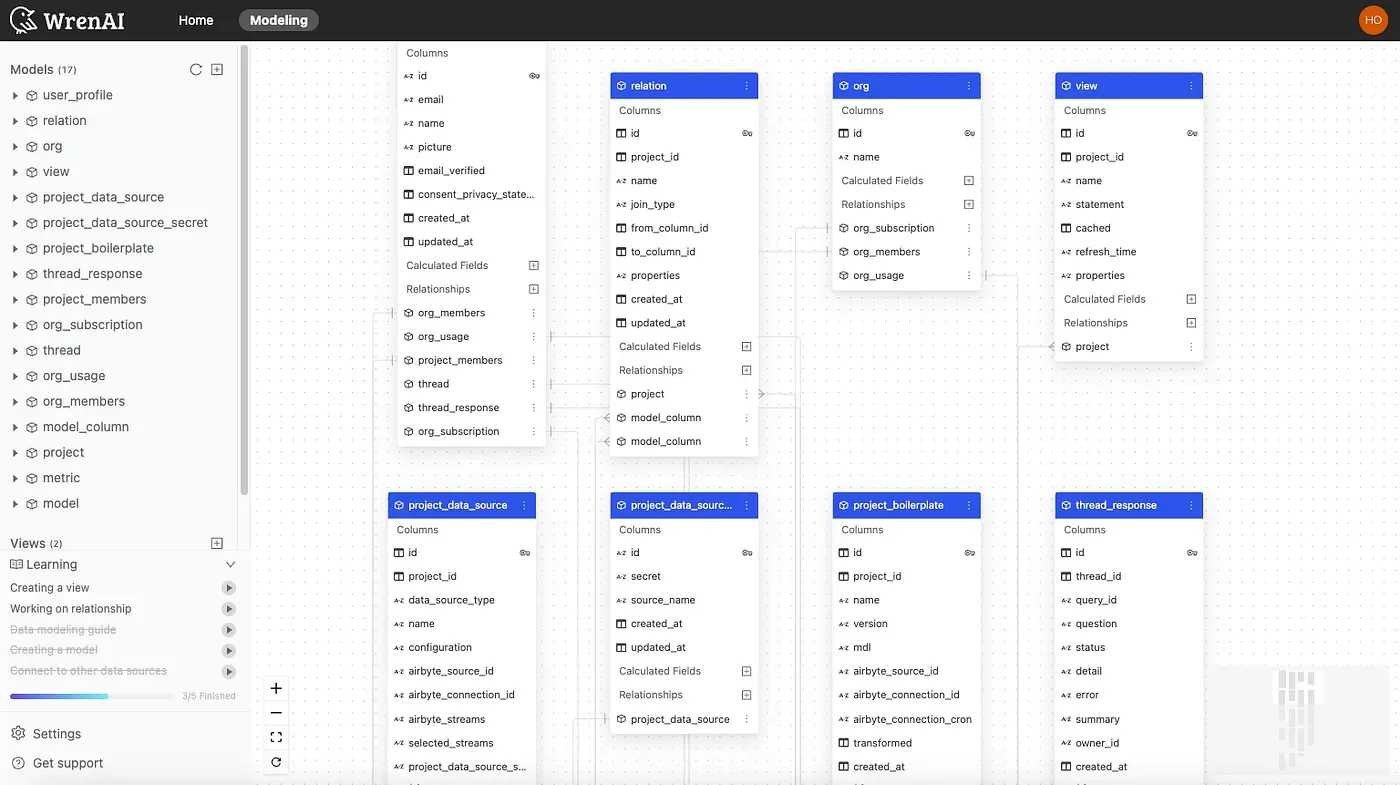
Wren AI adds a semantic layer to your data, organizing it in a way that’s intuitive and accessible. In the past, semantics were stored in the minds of key personnel, limiting data usability to a select few. Now, your entire team can navigate and understand data effortlessly.
3. Ask Questions and Get Answers Right Away
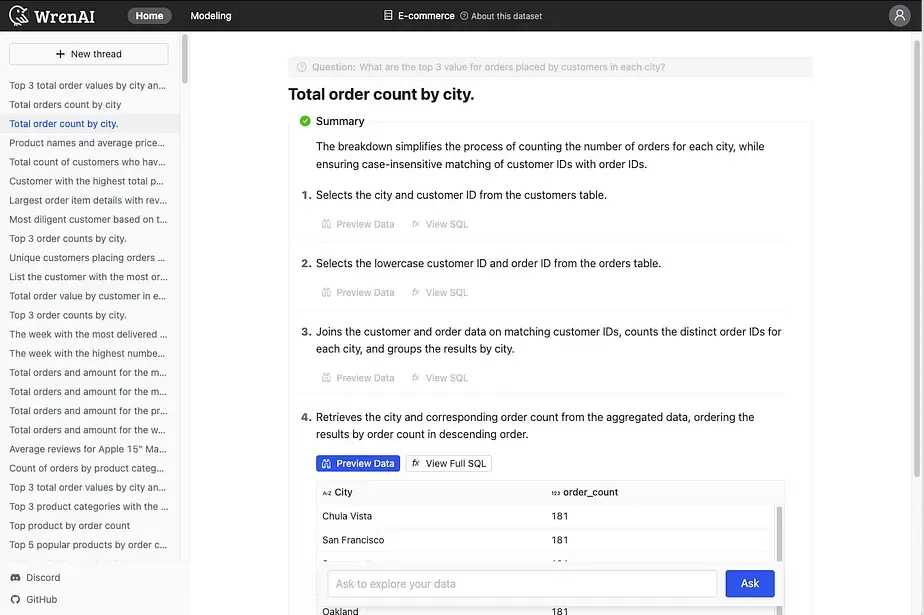
Forget the need to model metrics in traditional BI systems. With Wren AI, you simply ask business questions in natural language and receive instant answers. Dive deeper into insights by asking follow-up questions, eliminating the need to manually set up charts or model dimensions.
4. One-Click to Generate Charts and Pin to Dashboards
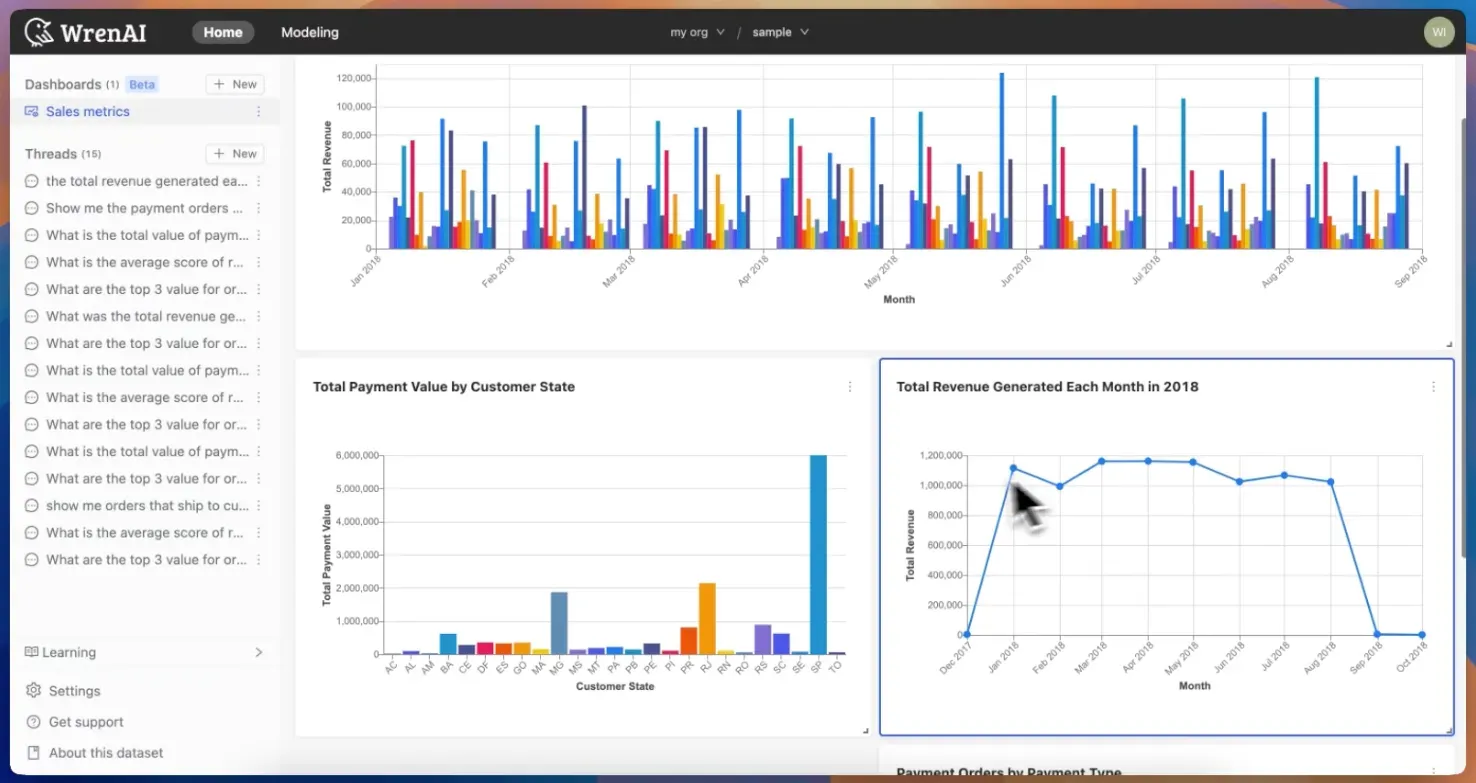
AI-driven chart generation takes the guesswork out of data visualization. Wren AI selects the best-fit charts automatically, and with one click, you can pin them to dashboards. No dragging, dropping, or complex setups are required — just insights at your fingertips.
The Future of BI: Powered by GenBI
As businesses face increasingly complex challenges, the ability to intuitively access and analyze data in real-time has become essential. Generative Business Intelligence (GenBI), with its innovative layers — from the semantic-powered Wren Engine to advanced agentic workflows like Chain of Thought (CoT) reasoning and ReAct prompting — is redefining the future of data intelligence.
Wren AI leads this revolution by making data not only accessible but also actionable for everyone. By integrating composable data design, semantic enhancements with our Modeling Definition Language (MDL), and intelligent workflows, Wren AI is shaping the next generation of decision-making, empowering organizations to unlock the full potential of their data ecosystem.
Ready to Experience GenBI?
Explore how Wren AI can transform your data access strategy by visiting our website. Discover how we redefine BI with our composable data framework, semantic-driven Wren Engine, and intelligent workflows.
For developers and data teams, Wren AI also offers an open-source version on GitHub. Dive into the code and experience how a semantic-enhanced, grounded approach to text-to-SQL can revolutionize your organization’s data operations.
Supercharge Your
Data with AI Today
Join thousands of data teams already using Wren AI to make data-driven decisions faster and more efficiently.
Start Free TrialRelated Posts
Related Posts
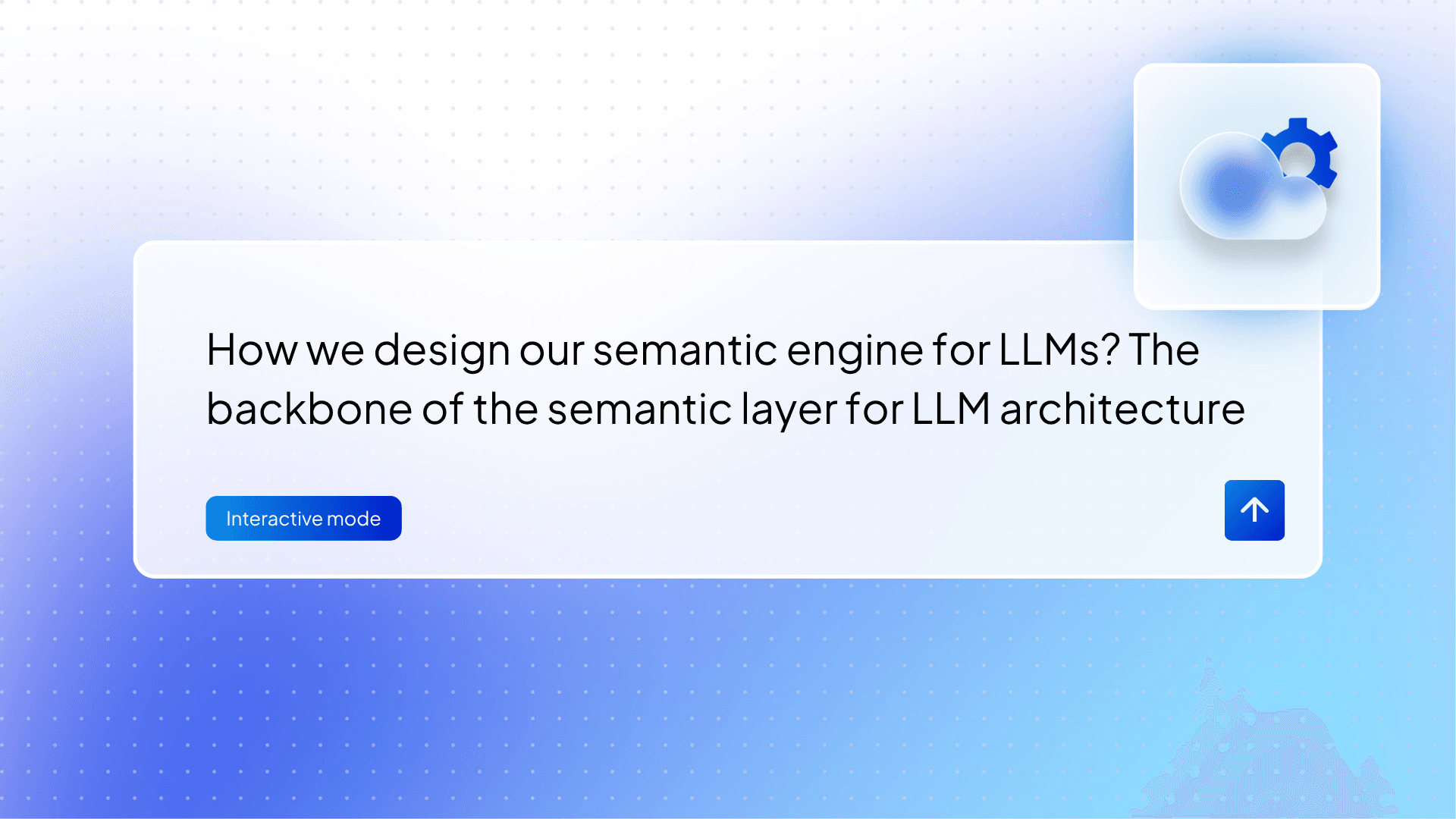
How we design our semantic engine for LLMs? The backbone of the semantic layer for LLM architecture.
The advent of Trend AI agents has revolutionized the landscape of business intelligence and data management. In the near future, multiple…
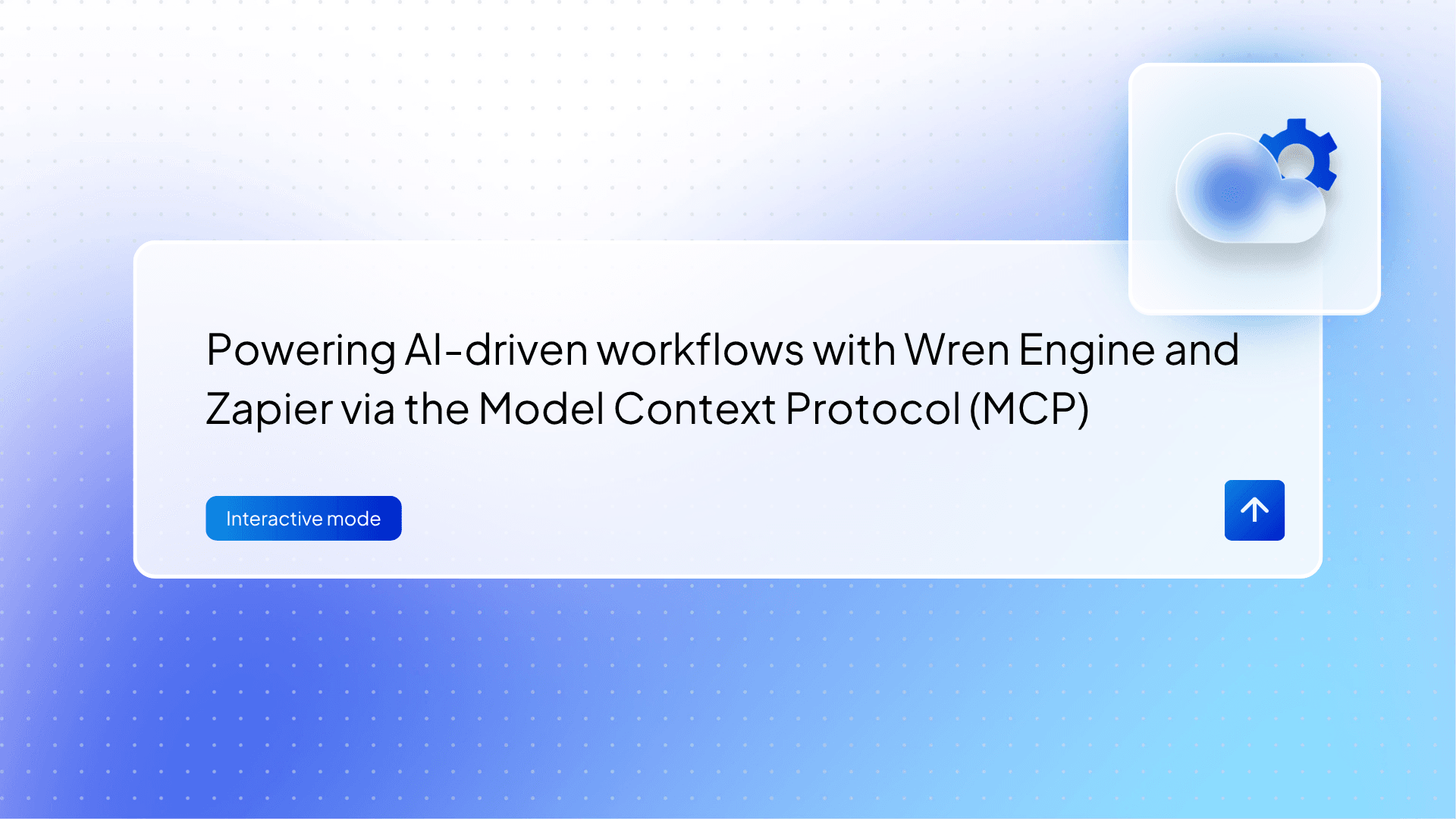
Powering AI-driven workflows with Wren Engine and Zapier via the Model Context Protocol (MCP)
Use semantic understanding, SQL generation, and email automation to streamline data requests with LLM agents and Wren’s powerful query engine.
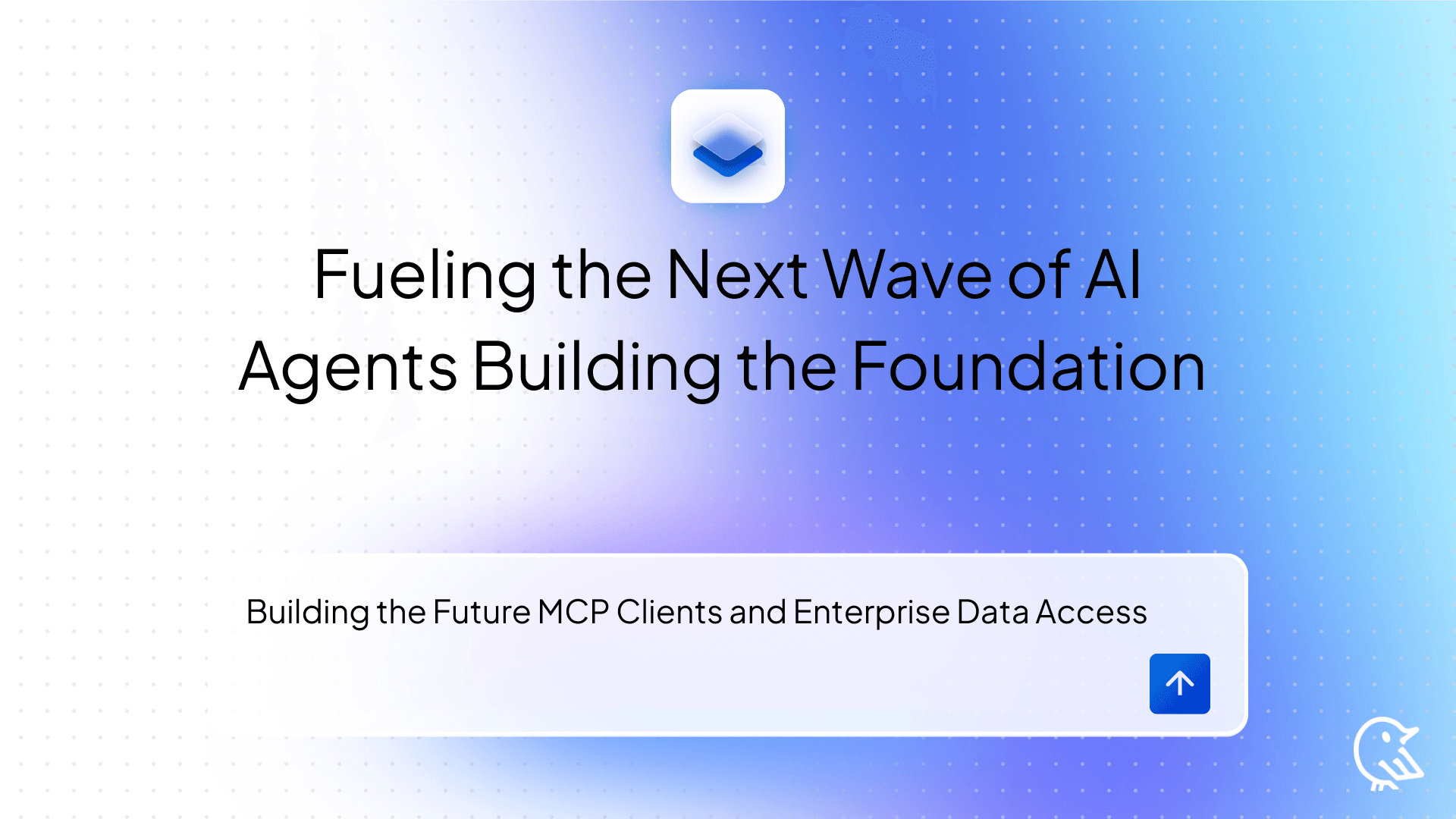
Fueling the Next Wave of AI Agents Building the Foundation for Future MCP Clients and Enterprise Data Access
How Wren Engine Powers the Semantic Layer for AI-Driven Workflows — Unlocking Context-Aware Intelligence Across the MCP Ecosystem

